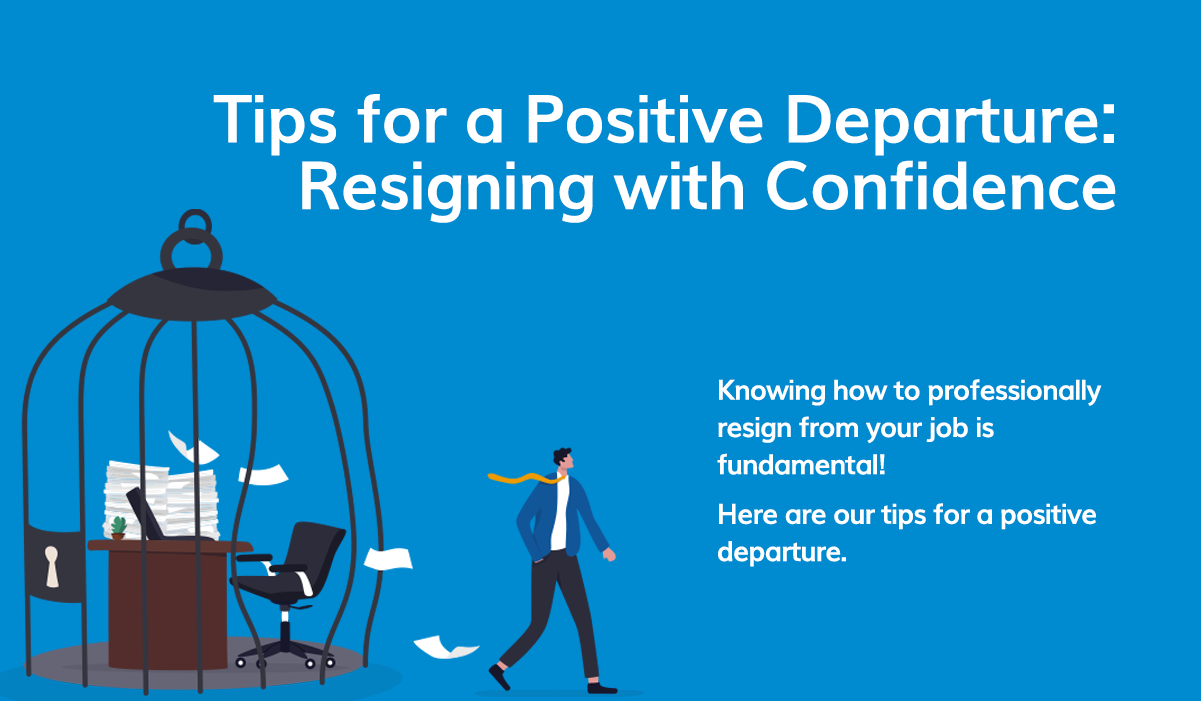You may have accepted another opportunity with another employer, or you felt its time to move on. The reasons may differ but the end result is the same: you are handing in your notice and leaving your role. It’s never easy, even if it’s “the worst job in the world” – handing in your notice can be a tough time. Knowing how to professionally resign from your job is fundamental for upholding a positive rapport with your employer. Here are our tips to set the tone for a positive departure.
1. Assess your decision
Think about your reasons for resigning. Before actually handing in your notice, take the time to reflect on your decision. Consider the reasons behind your choice and evaluate the impact it may have on your career goals. If need be, make a pros and cons list. Having a clearer pictures will avoid post-resignation regret. Understanding your “why” will help you communicate your decision more effectively. Consider your resignation’s impact on your career trajectory and goals. In a temporary rush of anger or disappointment, our emotions may lead us to take rash decisions which we may later regret. Make sure it makes logical sense to leave, whilst safeguarding your mental wellbeing.
2. Make sure your new role is confirmed
Before resigning, make sure you have an official, final and written confirmation of your new job, with all the terms outlined and clarified. This will avoid potential stress if you end up resigning and your offer is rescinded.
3. Communicating with your employer
Timing and communication are key when resigning. Choose an appropriate time and place for the conversation with your employer. Craft a well-thought-out resignation letter, and handle the resignation meeting with professionalism. Effective communication sets the tone for a positive departure. Avoid assigning blame in resignation letters, as it is not the time and place. More professional companies will organise a formal exit interview, other companies may set a meeting to discuss in more detail. Think about what you want to communicate.
4. Planning the Transition
Ease the transition for both yourself and your employer by offering assistance in the handover process. Document your tasks and responsibilities to ensure a smooth transfer of responsibilities. This proactive approach demonstrates your commitment and professionalism.
5. Maintaining Professionalism
Navigate the notice period with professionalism, fulfilling your responsibilities and commitments. Handle farewell conversations and events with grace, leaving a lasting positive impression on your colleagues and superiors. There may be some emotions involved, and that’s ok – just remember to maintain professionalism. Taking care of your well-being is essential for a confident and positive exit.
6. Looking Ahead
Reflect on the lessons learned during the resignation process. Use this experience as an opportunity for personal and professional growth. Keep in mind that a new experience awaits and look ahead!
The end of your time at this organisation, is not merely an endpoint but a strategic move towards future opportunities. Approach the next phase of your career with confidence, leaving behind a legacy marked by professionalism and a constructive working relationship.
Share this article with a friend or colleague.


